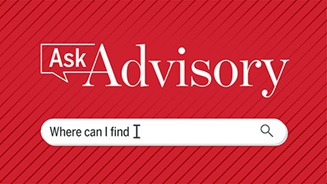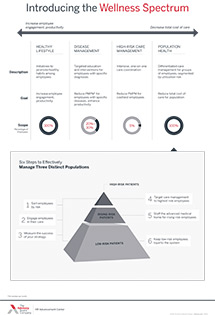After 12 years practicing family medicine, Ronda Rockett reached a breaking point: Her patients were plagued by diabetes, heart disease, and weight problems, and standard medical care was not making a meaningful difference—so she quit her practice and opened a CrossFit gym. A decision CrossFit CEO Greg Glassman is hoping other doctors will replicate, Julia Belluz writes for Vox.
Why providers are 'batting' on sports medicine
How CrossFit works
CrossFit is an exercise program focused on high-intensity workouts and resistance training. Glassman opened his first CrossFit gym in 2001, and since then, the company has developed 15,000 affiliates in over 160 countries, with an annual revenue of around $100 million.
There aren't any studies specifically on the long-term health effects of CrossFit, but there are many on the benefits of high-intensity interval training (HIIT), Belluz writes. Research has found that HIIT has benefits typically associated with longer exercise sessions, and has been shown to lead to more significant gains in cardio-respiratory fitness when compared with other types of training, according to Belluz.
Research also suggests HIIT might reduce the risk of Type 2 diabetes. One small study on Type 2 diabetes patients who did CrossFit found some improvements in the patients' blood sugar levels, and a similar study suggested patients doing CrossFit "spent significantly less time exercising per week, yet were able to maintain exercise enjoyment and were more likely to intend to continue" than those doing a moderate workout.
CrossFit also employs resistance training, which has been shown to help build muscle, Belluz writes. According to Stuart Phillips, a kinesiology professor at McMaster University, "Resistance training promotes greater strength. Aerobic exercise promotes greater aerobic fitness. You need both. And this is key: CrossFit provides both. If CrossFit's done anything, it's introduced resistance exercise to a lot of people that never would have considered doing it."
Purveyors of CrossFit also "zealously" promote low-carb diets, Belluz writes, "with particular scorn for refined sugars and carbohydrates." Glassman also has engaged in what he refers to as a "holy war" on soda, which he blames for growing rates of obesity and diabetes in the United States, according to Belluz.
The next phase of CrossFit: Doctors
Glassman's efforts to reshape public health is now focused on attracting more doctors to CrossFit, Belluz writes.
A couple years ago, Glassman found that at least 20,000 doctors in the United States practiced CrossFit, and that many of them felt "disappointed by their inability to prevent chronic disease and help patients change their behavior," Belluz writes.
"Medicine is supposed to be about helping you through the accidents—the misfortune of a genetic disease, the misfortune of a trauma, the misfortune of some pathogen," Glassman said. "Nobody went to medical school to babysit someone through a life of self-inflicted misery because of two deadly habits: sedentarism and excessive consumption of refined carbohydrates."
In January, Glassman launched "CrossFit Health," an initiative focused on getting more doctors involved in CrossFit—and one that he says will shape the future of his business. So far, Glassman has hosted 340 doctors for free two-day training courses, which is the minimum amount of training required to open a CrossFit gym, as well as weekend-long networking events and lectures.
"[Doctors have] gone back [from the training weekends] a little bit militant" and "[m]ore eager to talk to one another and their colleagues; more likely to take a patient by the hand and bring her into the gym," Glassman said.
What the initiative means for doctors
Glassman said he's not hoping to get doctors to quit medicine, but instead hoping doctors will prescribe CrossFit to their patients, or even open a gym themselves.
Many of the doctors who have joined the initiative, like Rockett, have felt reinvigorated about how they can help their patients. Rockett previously cared for about 2,000 regular patients and now works with about 70 regulars at her CrossFit gym, which she described as "more fulfilling," Belluz reports. "It's exciting that I can treat and cure medical problems in the gym," Rockett said. "Just in the last week alone, I've gotten three different texts from people saying, 'I don't think you understand how much this has changed my life.'"
Nathan Riley, an OB-GYN at Scripps Memorial in California, said most physicians "are becoming very desperate. We are finding the Western medical model isn't providing us with the tools to help people. Most physicians don't see we're doing anything to improve people's health."
Laura Vigna, a doctor from New York, felt similarly to Riley, and said she's optimistic about CrossFit's potential. "People who do CrossFit know that you can do a lot without any medicines; you just need to focus," she said. "High cholesterol, high blood pressure—CrossFit can fix all those things through diet and exercise."
Some experts express skepticism
Not everyone is onboard with the CrossFit Health revolution, however. Michael Jensen, an obesity and metabolism expert at the Mayo Clinic, said CrossFit isn't easily accessible to everyone. "We have a lot of [health problems] that could be addressed by better lifestyle, but the question is 'how generalizable is [CrossFit],'" he said, adding, "In my opinion—having taken care of thousands of patients—it's not generalizable."
The more important thing is to get a non-exerciser to do some kind of activity, rather than no activity, Phillips said. "The biggest reduction in risk for every single known chronic disease when it comes to physical activity happens when you get somebody who does nothing to do something, and I mean anything—going for a walk," he said. Phillips added that he has "yet to see the magic in CrossFit that makes it the, as opposed to an exercise-based solution for population health."
Yoni Freedhoff said exercise is "truly a wondrous thing for health," but was cautious of exclusively recommending CrossFit. "[S]uggesting there's something unique to CrossFit probably isn't evidence-based," she said. "And then there's the fact that the percentage of the population sufficiently privileged to intentionally find consistent, multiple times per week exercise blocks is very, very small" (Belluz, Vox, 12/13/18).
Get a free excerpt on building ASC referrals
The market for ASCs is highly competitive. Since 2009, roughly one Medicare ASC has closed for every two that opened. Get this excerpt to learn how to boost referrals and profits by cultivating strong stakeholder engagement in sports medicine and beyond.
Don't miss out on the latest Advisory Board insights
Create your free account to access 1 resource, including the latest research and webinars.
Want access without creating an account?
You have 1 free members-only resource remaining this month.
1 free members-only resources remaining
1 free members-only resources remaining
You've reached your limit of free insights
Become a member to access all of Advisory Board's resources, events, and experts
Never miss out on the latest innovative health care content tailored to you.
Benefits include:
You've reached your limit of free insights
Become a member to access all of Advisory Board's resources, events, and experts
Never miss out on the latest innovative health care content tailored to you.
Benefits include:
This content is available through your Curated Research partnership with Advisory Board. Click on ‘view this resource’ to read the full piece
Email ask@advisory.com to learn more
Click on ‘Become a Member’ to learn about the benefits of a Full-Access partnership with Advisory Board
Never miss out on the latest innovative health care content tailored to you.


